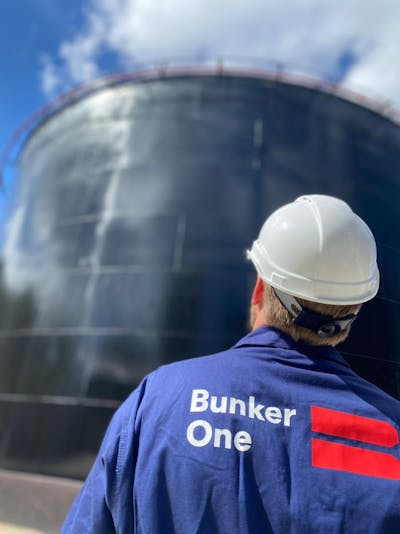Guidelines for preparations for 2020 Marpol compliance
In close cooperation with one of the leading and most recognised fuel test providers we are testing all the new products we see in the market and can get hold on from various refineries and fuel blenders. Also, we have now 5 years’ experience from changing between HS and LS for vessels trading ECAs. It is our conclusion that we will experience some compatibility problems, but not necessarily worse than we have experienced during the last many years.
The biggest concern is if there are any piles of asphaltenes and cat fines in the tanks which might be dissolved by introducing more naphthenic and aromatic fuel into the tanks, jeopardizing the safety of the vessel with separator and filter problems. This also happens occasionally today, but it is our advice that special attention should be given in places where the problem has never happened since the characteristics of the fuel will change. We recommend inspecting as many tanks as possible prior to changing to 0.5% products and to dig out the piles, if any, with a shovel and buckets as necessary. Inspection of bunker tanks should be part of the SMS and be performed as frequently as possible and no less than at every planned dry docking.
Let us help you validate the fuel
From our testing we have gained experience identifying the most problematic products and we offer a validation of the fuels prior to filling with our products. Send us the ISO specification of the fuel onboard (as accurate as possible) and we will evaluate the parameters of the fuel you have ordered. Based on our evaluation we will give our best recommendations on stability and compatibility issues. An even better option is for you to send us a physical sample which will enable us to make a compatibility test. This way our recommendations can be close to bullet-proof.
A cleanliness/stability test is a valuable tool for evaluating two products before blending and switch-over, especially until we get familiar with the new products. A cleanliness/stability test is very simple and can be made locally without investment in expensive testing equipment. To support you we have a small guideline which can be sent to you on request.
Re-designed fuel system for specific purposes
For vessels trading in routes where it will be necessary or profitable to change between cracked fuels and paraffinic fuels, we can re-design the fuel system for the specific purpose. These are not huge conversions - in most cases it can be managed by pipework, valves and common sense.
Make a bunker plan
To perform due diligence and to prove best practice for the authorities, it is necessary to make a bunker plan. Let us give you an example: When introducing new sulphur regulations, the sulphur content used to be on the lower side of the limits. However, we know by experience that the fuel blenders get familiar with the blending processes relatively fast and optimise their products to the limit with very little or no margin. It is of course important that your fuel supplier initially can supply a product with a small margin - otherwise the vessel will never become compliant. At Bunker One we do our utmost to secure a sulphur margin to 0,5% for the products to be delivered in 2019. Call us to get information on the specific sulphur content so you can perform your due diligence.
Alternatively, we recommend you to flush the tanks with a gas oil 0.1% S. The principles are of course the same, with a bigger sulphur margin to 0.50%. This all depends on your ability to organise and your timing on the changing process.
Related insights

Aalborg, Press release
European Bunker Markets in 25/26: Consolidation, Capacity, and Change
2025 in Review: Strengthening the Platform

West Africa, Press release
Building Market Share in 2025, Positioning for Sustainable Growth in 2026
A Bunker One Africa Perspective

Houston, Press release
U.S. Bunker Demand in 2025–2026: Why the Gulf Coast Still Leads
A Bunker One Houston Perspective

Aalborg, Press release
Belgium Hit Pause and Maritime Exemptions Remain in Germany
Europe’s implementation of RED III is about to reshape the marine fuel market, but not in a uniform way.